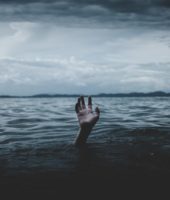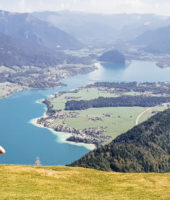My identity might begin with the fact of my race, but it didn’t, couldn’t, end there. At least that’s what I would choose to believe. ~ Barrack Obama
Often when I am seated in front of the painting of the “Chinese Girl” – “The Mona Lisa of Kitsch” in this café in Johannesburg, not a single day goes by when someone or a stranger doesn’t remark on our resemblance – our haircut perhaps or the shape of our eyes and the high cheek bones. And she wears my favorite green-blue mix of colors.
The 1952 “Chinese Girl” was one among many works of Vladimir Tretchikoff who painted exotic looking women – a half Chinese and half French girl called Monika Pon who still lives in Cape Town.
As a global dweller or more appropriately an unbounded-wanderer-very-homeless – I am fortunate to not possess the stereotypical looks of any particular nation. My physical appearance and personal identity are ‘as fluid as my personal experiences are diverse.’ There had been times in my recent past when I would feel extremely sad and lonely and I would want to “go home” like everyone. Only, I would not know where home is. Or where I should be going if I were to go looking for a home.
I grew up in a part of India where ethnic identities were blurred and physical boundaries between nations and ethnicities were farcical just to suit political interests – between India (and Bangladesh), China (and Tibet) and Burma (Myanmar). I cannot ascertain what bloods run in my veins and whose genetic material I carry – and it does not matter to me. But I do know that if I ever tried to describe myself with the identity of India as ‘my nation’ – I failed each time. After numerous attempts I realized that it was not in me to be identified with anything – nationality or a cause or a region or a culture or a social milieu.
I just could not belong – not even to an idea.
Often in India, I could get away with humiliation and disgrace because of my versatile looks – for I could easily blend in – I could be South or North Indian anytime I wished and could pretend to be a Brahmin as my situation warranted. I was saved rape, humiliation and discrimination which some of my friends and people from the region had to endure because of the way they looked – whilst working in the capital city of New Delhi or strolling in the streets of Bombay or Bangalore.
Modern life is marked by the collision of cultures – and so then should our minds grapple with identity and belonging? We are all wounded beings. Wounded people seek comfort in affinity – their identities morph into a sense of belonging with a group, race, institution or nation through some shared predicament that attaches to beliefs and self-worth.
I have my great-grandmother’s feisty spirit – she who as a political activist fought to bring ‘self-worth’ back to the communities of northeast India – those who were abandoned from the rest of India. But I realized that the angst I inherited from my great-grandmother was nothing more than a teenage search for self-identity and worth. I too had used ethnicity and a shared predicament (stories of atrocities and violence and the history of a people who are still unable to integrate with the concept of ‘India.’
The concept of India? India is not a nation, but an idea of the coming together of various people and cultures.
All this gave me a false sense of belonging and I had gone against the natural will of my soul.
So I emptied out my heart as a 20-year-old with thoughts of independence and transcendence that had once gnawed at the corners of my young mind. I emptied them out with hopes for my own soul’s salvation – that one day I would become bigger and better than what I was.
I threw caution to the wind and crossed nations and borders in search of myself. Even the muddy waters of the mighty river Brahmaputra that flows in northeast India could never draw me down.
As I went along in life I carried aspects of this identity with me for a while – filled with ideas and stories that I had thought defined me. I looked for myself in people and places – sometimes I found myself in them and other times people were mere reminders of who I never wanted to become.
Paradoxically, I found myself only when “I” ceased to exist – when I had no identity. The experience was similar to groping in the dark for something tangible to hold onto only to find nothing. Absolutely nothing.
‘I’ unravelled like a human ball of wool and all that was left was empty space. And in empty space – there is no sense-making and tangible ideas and thoughts such as identity and beliefs dissipate.
I am not my thoughts, emotions, sense perceptions, and experiences. I am not the content of my life. I am Life. I am the space in which all things happen. I am consciousness. ~ Eckhart Tolle
Our stories and beliefs have the power to make self-identity a tangible thing – as real as the air we breathe.
And perhaps my identity is now my soul – unconfined and unambiguous. Growing up in this region of India I learned to never make the mistake of calling anything my own. No matter what happened to me I would be like the river at all times – undefined and fluid.
But then – isn’t it in the essence of all our souls – to be always changing and forever flowing.

Author: Radhika Mīa
Email: [email protected]
Author Bio: Radhika Mīa is an artepreneur and a transcendentalist writer based in Johannesburg, South Africa. She believes that joy colors the world for all of us to shine.
Link to social media or website: Instagram @radhika_mia






